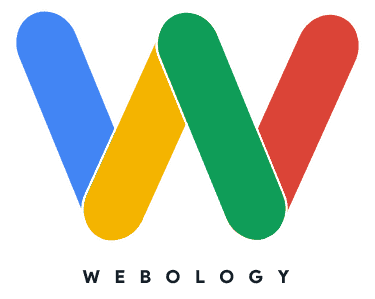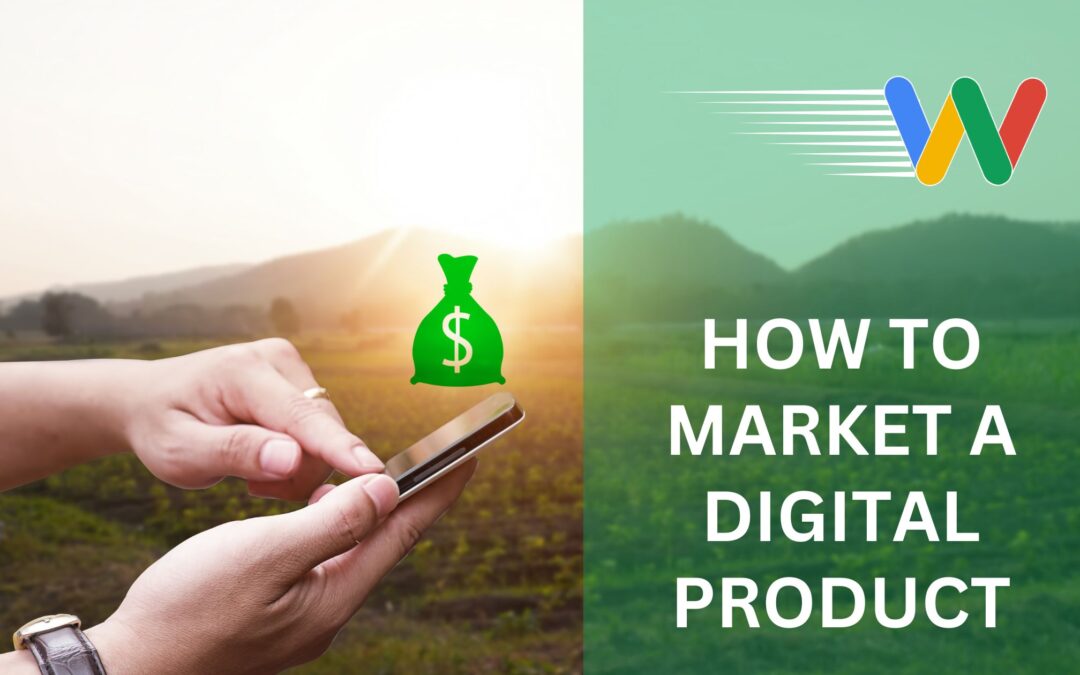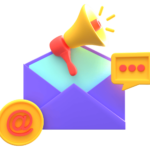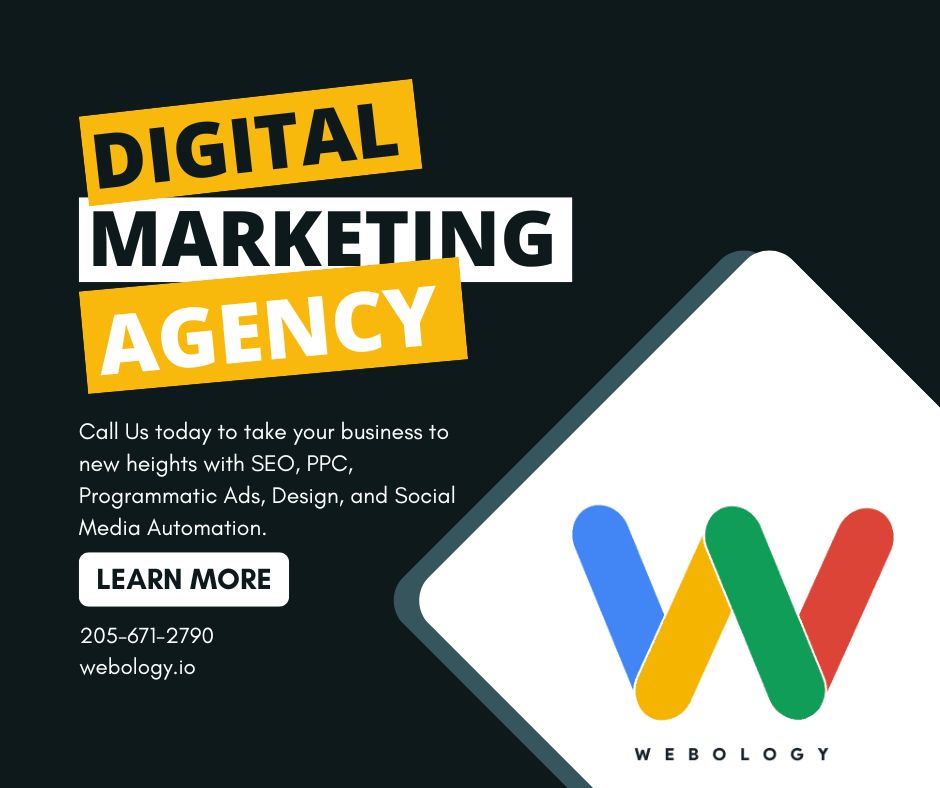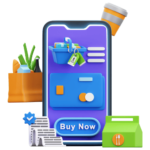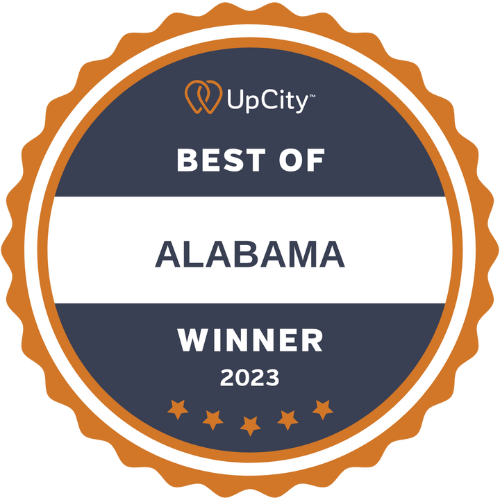A digital product is anything non-tangible that you can deliver to a customer digitally. It can be a course, a database of leads or just about anything else you can imagine.
For example, I sell backlinks on authority sites that make my clients a lot of money. It’s done in a proper way that’s search engine-friendly and safe. We also design logos and build WordPress websites. We’re WEBOLOGY, an SEMrush certified agency partner that generates millions of dollars a month in revenue for our clients. In the digital world, opportunities are endless…
Unlike physical products, they don’t require inventory and shipping. Plus, you can create a digital product once and sell it over and over again.
However, a challenge most product owners face is marketing it effectively to the right audience, in the right way online.
You don’t just want to sell a product; the goal should be to build lasting relationships and create a recurring income stream through:
- Email lists
- Custom audiences
- Organic traffic
If you want to market digital products online, one way to promote your brand is to leverage the organic channels that don’t go up-and-down so much with the business cycles.
These are the three things I see as fundamental to creating a recession-proof online brand.
If you have to cut budgets for a while, will you still have an audience??? I always do…Don’t worry, I’ll show you how we keep our sales pipeline completely FULL of leads at Webology.
Table of Contents
In this blog post, we’ll get into the most powerful ways to market a digital product online. Plus, you’ll learn how to build an email list so that you can create a sustainable, long-term digital product business. Email is where the magic is at when it comes to online brand-building.
Let’s dive right in.
What is a Digital Product and Why Should You Sell It? 
A digital product is anything that’s non-tangible, such as an e-book, course, graphics, templates, checklists, and more.
These products are so popular because the development costs are next to none. Plus, there’s almost no hassle associated with selling digital products.
All you need is the product, a platform where you can sell it, and some effective digital marketing strategies. Since a customer can download it from anywhere in the world, you can sell a digital product to a worldwide audience.
Webology is actually the perfect example of this. We’re a digital marketing agency. I founded the company in 2016 after I spent over a decade in IT and electrical engineering. Right now we have clients here in Alabama, but we also work with brands in the UK, Mexico and Canada. Our core services are in:
- Web Design
- Search Engine Optimization
- Social Media Automation
- Programmatic Advertising
What we really sell is our knowledge and expertise in advertising. We can do that work for anyone, anywhere. But you’re here today to learn the DIY approach from the very best agency in the business. So how do you get started with digital products? First, I’d check out these ideas to help figure out your pricing and special offers.
| Pricing Strategy | Description | Advantages | Disadvantages |
|---|---|---|---|
| Freemium | Offering a core product for free while charging for premium features. | Increases user base quickly, Converts free users to paid users over time, Useful for gathering user data | May require robust infrastructure for a large number of free users, Conversion rate from free to paid can be low |
| Subscription | Charging users a recurring fee for continuous access to the product. | Predictable and steady revenue stream, Higher lifetime value per customer, Encourages user retention | High competition for subscription-based products, Requires consistent delivery of value to retain customers |
| One-Time Payment | Charging a one-time fee for full access to the product. | Immediate revenue generation, Simplicity in sales and customer understanding, No ongoing obligations | Limited long-term revenue, Constant need to acquire new customers, Could be a high initial price barrier |
| Tiered Pricing | Offering different levels of product pricing based on features and services. | Cater to different segments of users, Upselling opportunities, Increased customer choice and flexibility | Complexity in setting up and maintaining different tiers, Potential customer confusion, Requires extensive market research |
| Pay-Per-Use | Charging users based on their usage of the product or service. | Appeals to users who want to avoid upfront costs, Scalable with user needs, Encourages efficient usage | Revenue can be unpredictable, Complexity in tracking usage data, Higher risk of users not using the service consistently |
| Bundling | Selling the digital product along with other related products or services at a combined price. | Increased perceived value, Higher sales volume, Opportunity for cross-selling | Lower profit margins on bundled products, Can be confusing if bundles aren’t well-designed, Risk of undervaluing individual components |
| Discount Pricing | Offering temporary pricing discounts to boost sales. | Attracts price-sensitive consumers, Quick sales boost, Moves excess inventory | May devalue the product, Can attract non-loyal customers looking for deals, Risk of lower profit margins |
| Dynamic Pricing | Adjusting prices based on market demand, competition, or other external factors. | Maximizes revenue potential, Flexibility to respond to market changes, Can target different customer segments effectively | Can lead to customer dissatisfaction if prices fluctuate too much, Requires sophisticated data analysis tools, Complexity in implementation |
Next, you need to do some marketing but before we dig into the latest Webology strategy, there are two more steps I highly recommend:
- Build your brand online
- Run a pre-launch campaign
The first step is critical, but implementation is really simple. Launch your brand presence by creating profiles on the top social media platforms. Build at least a basic website with important pages like Home, About, Contact and Terms of Service. This will establish your online presence and make it easier for potential clients to find you.
Once your brand is established, running a pre-launch campaign can help generate buzz and interest in your services. This could include promoting a special offer or providing valuable content related to your industry through digital PR. Create some buzz and get some juicy links from authority media sites. It will help you show up in search engines.
But beyond these initial steps, the key to success in advertising is understanding the market and targeting the right audience through a carefully planned and executed digital marketing strategy.
Top Digital Product Marketing Strategies 
Have a digital product to sell? Let’s get to the next part: Generating leads and establishing a sales funnel for your brand. Let’s start with one of the most important steps in any digital marketing strategy: Building an email list.
At this point, you might be wondering why I’d suggest something as bland as email marketing? What am I? A DINOSAUR???
Shouldn’t we be buying ads on Meta, Pinterest or whatever platform is hot at the moment?
Maybe if you have bottomless budgets, you can start those things at the same time. For the rest of us, I’ll always default back to email lists for three key reasons:
- It’s an audience you create and therefore, you own it. Social media platforms start out great for creators and as the audience grows, your organic reach dwindles to the point it’s hard to turn a profit. OWN YOUR DATA!
- The costs are astronomically lower than any other digital marketing channel. All you need is a domain email account and a good sending tool. I prefer the ones that allow you to send in batches. It helps with mail deliverability issues.
- You can segment and personalize your messaging like no other channel. Need to speak to moms in their mid-30s who love yoga and live in the suburbs? Done. Want to target CEOs of small businesses with a higher income level who might be interested in a niche investment strategy like the Infinite Banking Concept? Easy. Just build an email list of qualified prospects with your own data.
Email List Building 
Email list building is the need of the hour. While having multiple sources of high-quality traffic is important, it’s essential that you gather all your traffic in one place that YOU control. It’s where SALES meets MARKETING to drive your ROI…
List-building is a way to create a database of leads and customers so that you don’t have to rely on those third-party marketing avenues that eat budgets alive 😅
Instead, you can dominate your niche using custom data no one else has access to like we do with our ClicktoBrick campaigns.
You don’t own Instagram, Facebook, Google, etc. But, what you do own is your email list. Digital sales channels go up and down in cost/reach as their business models dictate. You can’t control it as a business owner. What you can control is data you curate yourself.
Your email list is a group of people who closely follow your brand. It’s the perfect audience and a list you can promote your products to effectively and repeatedly.
So, before diving into the traffic strategies, let’s talk about how you can go about creating an email marketing campaign. Once you have an email marketing funnel, you can use different marketing strategies to drive traffic and generate consistent sales.
Pick an Email Marketing Platform
Start by picking an email marketing platform, such as ConvertKit.
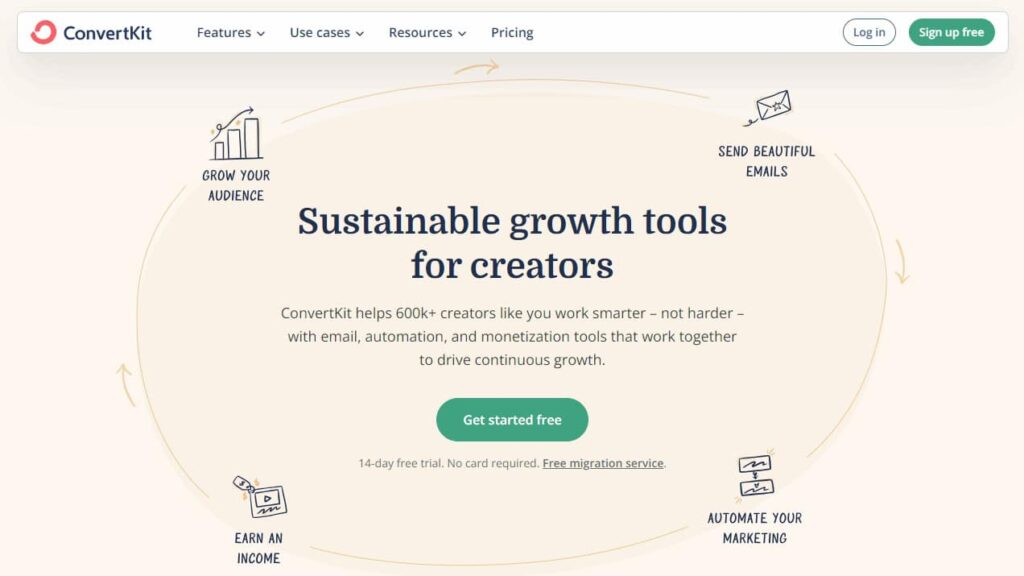
Look at their features, pros, and cons to make sure you select the right one as it’s a long-term decision. You can also deliver your digital product through these platforms.
Find a Low-Friction Payment Gateway
People in your funnel expect as few clicks as possible to make a purchase. Pick a software solutions that’s easy to integrate with your email marketing platform and offers low transaction fees, such as Stripe or PayPal. Test and make sure your customers can easily complete a checkout after just a few clicks from your newsletter.
Personally, I like the tools available in Jotform. It’s a low price option for adding a payment form to a website and it literally works with any CMS because you can embed an iFrame in your HTML. If you check into the source code on this website, you can see we use their forms and they offer a convenient payment integration option that’s perfect for a digital product. Here’s a few of the most common options people pick when they’re selling a digital product online:
| eCommerce Platform | Payment Gateways |
|---|---|
| Shopify | PayPal, Stripe, Shopify Payments, Authorize.Net |
| WooCommerce | PayPal, Stripe, Square, Amazon Pay |
| BigCommerce | PayPal, Stripe, Apple Pay, Authorize.Net |
| Magento | Braintree, PayPal, Stripe, Square |
| Wix eCommerce | PayPal, Stripe, Square, Wix Payments |
| Squarespace | Stripe, PayPal, Square |
| Weebly | Square, Stripe, PayPal |
| OpenCart | PayPal, Authorize.Net, Square, Stripe |
| Volusion | PayPal, Stripe, Authorize.Net |
| Ecwid | PayPal, Stripe, Square, Amazon Pay |
Develop a Lead Magnet
Once your account is set up, it’s time to think about getting prospects on your email list. Offering a lead magnet is a perfect way to do that. A lead magnet is anything that gets your target audience to provide their email address.
For instance, if you’re in the “Lose weight fast” niche, you can offer a free e-book guide on using natural remedies to lose weight fast. This gives you something of value you can trade with your audience for their email address.
You can also offer a free trial of your product or service, a cheat sheet or checklist, webinar registration, or even a quiz. The key is to provide something that solves a problem or fulfills a need for your target audience.
Create a Landing Page 
To collect email addresses, you’ll need a well-designed landing page. If you’re offering a lead magnet, mention its benefits on your landing page. Use a clear, simple, and action-oriented call to action to drive actions, for instance, “Get your free e-book now”.
Come Up with an Email Sequence
Once someone is on your list, you want to send them valuable emails consistently. This builds your authority and trust so that you can pitch your offer later on.
As the bond between you and the audience becomes stronger, market your digital product with promotional emails. You can use selling techniques like limited-time discounts and free bonuses to boost your sales.
The number of emails you should send before pitching your offer depends on your offer. Also, you don’t have to stop sending emails after someone has purchased your product. Remember, the more emails you send, the more money you make.
Now that you have a fully functional sales funnel, it’s time to drive high-quality, relevant traffic to it. The goal is to get people on your email list, after which, they’ll receive a sequence of emails.
Use Social Media to Promote Digital Products
When it comes to using social media for list building or any promotional activity, the process remains the same.
The first thing you want to do is identify the platforms where your audience is active. It’s different for every business. For instance, if your digital product falls under the B2B (Business-to-business) category, LinkedIn will likely be the best option. You can automate your personal profile and leverage your business page to engage with qualified prospects. Here’s a convenient table we created with some top channels you might want to consider.
| Channel Type | Channel Name | Description |
|---|---|---|
| Search Engine | Google Ads | Pay-per-click advertising on Google’s search results and display network. |
| Search Engine | Bing Ads | Advertising on Microsoft’s search engine and network. |
| Social Media | Facebook Ads | Targeted advertising on Facebook’s platform. |
| Social Media | Instagram Ads | Advertisements integrated into Instagram feed and stories. |
| Social Media | LinkedIn Ads | Business-focused advertising on LinkedIn’s platform. |
| Social Media | Twitter Ads | Sponsored tweets and trends on Twitter. |
| Social Media | Snapchat Ads | Advertisements shown in Snapchat stories and discover section. |
| Social Media | Pinterest Ads | Promoted pins and visual advertisements on Pinterest. |
| Social Media | TikTok Ads | Short-form video advertisements on TikTok’s platform. |
| Email Marketing | Mailchimp | Email campaign management and automation. |
| Email Marketing | SendinBlue | Comprehensive email marketing tool. |
| Email Marketing | Constant Contact | Email marketing and online survey tool. |
| Content Marketing | Blogging | Creating and publishing relevant content to attract audience. |
| Content Marketing | Guest Blogging | Publishing content on third-party blogs to reach a new audience. |
| Content Marketing | Webinars | Online seminars or presentations to engage potential customers. |
| Video Marketing | YouTube Ads | Advertising on YouTube videos and channels. |
| Video Marketing | Vimeo Ads | Video hosting and advertising platform. |
| Affiliate Marketing | Amazon Associates | Affiliate marketing program by Amazon. |
| Affiliate Marketing | Commission Junction | Affiliate marketing and performance-based advertising. |
| Influencer Marketing | Instagram Influencers | Partnering with Instagram influencers for product promotion. |
| Influencer Marketing | YouTube Influencers | Collaborating with YouTube personalities to promote products. |
| Mobile Marketing | SMS Campaigns | Sending promotional messages via SMS. |
| Mobile Marketing | Push Notifications | Delivering messages directly to users’ mobile devices. |
| Native Advertising | Taboola | Content discovery platform for native ads. |
| Native Advertising | Outbrain | Content marketing platform for native advertisement. |
| Display Advertising | Google Display Network | Banner and visual ads across websites in Google’s network. |
| Display Advertising | AdRoll | Retargeting and display advertising platform. |
Once you know where you want to build a following, optimize your profile/s. This includes uploading branding elements, such as a professional display picture and an eye-catching cover photo. Writing a comprehensive description with all the necessary details about your niche is also crucial.
Use keywords, and not just the ones that are intuitive to you. Put yourself in your customer’s shoes. What would they search for to find you in a search engine? Those are the keywords you want your website to rank for.
As soon as you have an optimized profile, start sharing valuable content on topics directly related to your digital products. Before that, develop a content plan and create a content calendar for consistency and ease of publishing.
You want to use your content to direct viewers to your lead magnet opt-in page where you can collect their email addresses and trigger the email sequence. This can vary depending on the platform, for instance, on Instagram, you can promote your link in three places:
- Link in the bio
- The comments section
- Direct messaging
You May Also Like: Can Digital Marketing Be Replaced by AI?
How to Create a Video Marketing Strategy to Sell Digital Products
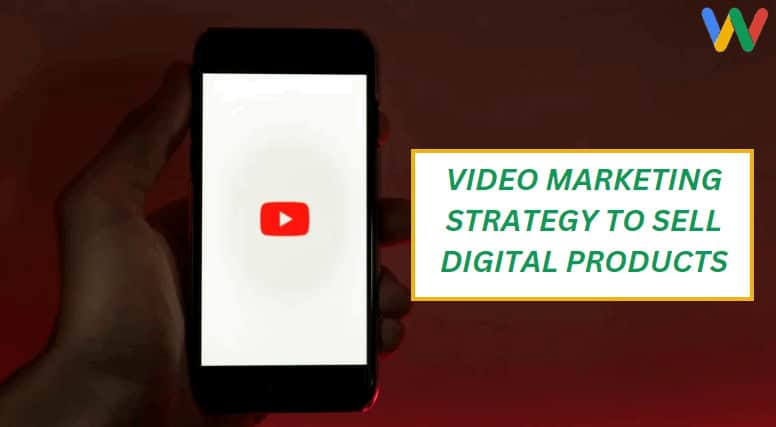
Videos are a powerful way to engage and captivate an audience, providing valuable content in a visually appealing format. To start, identify what kind of video content will appeal most to your target audience.
You can create short-form vertical videos to reach a wider audience. Long-form YouTube videos are a great way to dive deeper into different topics and build your credibility as a product owner.
You can share your opt-in page link in several ways:
- Using a Manychat automation funnel
- Adding the link to your video description
- Adding it to your page’s bio
- Send it directly through the comments
Don’t forget to optimize your videos for search engines by including relevant keywords and a compelling call-to-action to encourage viewers to learn more about your offer.
Lastly, measuring the performance of your video marketing strategy through analytics will help you see what’s working and where adjustments are needed.
Use Blog Posts to Get Email Subscribers
Blogging is another powerful way to build an email list and promote a digital product. It’s essentially a form of content marketing that involves search engines.
Done right, blogging can help you get email list subscribers as well as digital product buyers on autopilot. However, you need to know how to use that traffic to sell digital products.
See, blog visitors are on the lookout for information on specific topics. As a content marketer, your job is to provide them with valuable content on topics they want to learn about. Importantly, the content of your article should be directly related to the product you’re promoting.
For instance, if you’re selling a course on starting a digital marketing agency, you can write helpful blog posts on individual aspects of starting and growing a digital agency.
Related Content: Top Services Agencies Offer
You can use a tool like Google Keyword Planner to find a list of relevant topics for your website’s blog page.
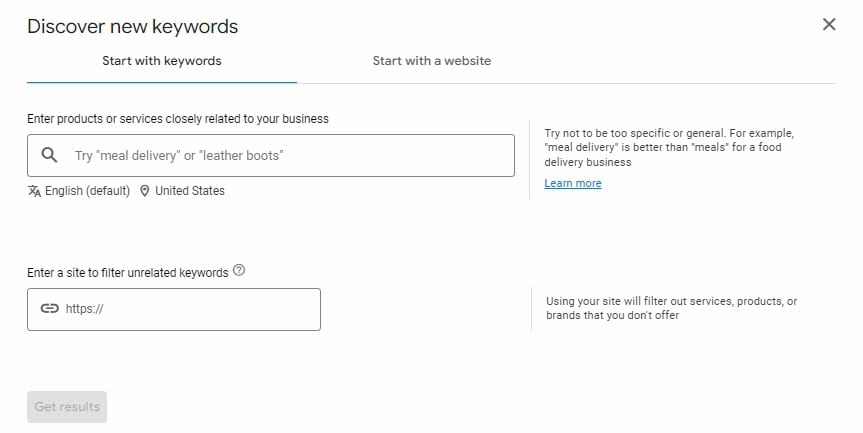
You can promote your email landing page or digital product sales page:
- Within the blog posts contextually
- On the sidebar of your website
- With an exit-intent pop-up
To rank your blog posts on search engines, you’ll need to follow on-page SEO best practices while creating your content. Don’t complicate it. Just make sure you’re covering the basics:
- Include your keyword and its variations within the content (Title, heading, body, URL, meta description, and image ALT text)
- Upload small-sized images to keep your pages fast (Less than 100 KB, ideally)
- Make your content easy to scan and address the searcher’s intent
Leverage Influencer Marketing
Influencers are people who can influence a sizeable audience within a specific industry. Influencer marketing is when you leverage that audience to promote your own products.
By working on this marketing strategy, you eliminate the need to build a social media following. It lets you put your digital product or lead magnet in front of a group of relevant people almost instantly.
Here’s how it works step by step:
Find the Right Influencer
The first step is to find a perfect match for your business. Not all influencers are right for your digital product, even if they have a huge following.
You want to filter one based on some factors. Probably the most important one, after the follower count, is the level of engagement on their posts.
If they have a large following and no engagement on their content, the partnership will most likely be a waste of your resources. Look at the likes, comments, and shares on their latest posts to make sure they have an “Active” following.
You can use a platform like GRIN to make your influencer search easier.
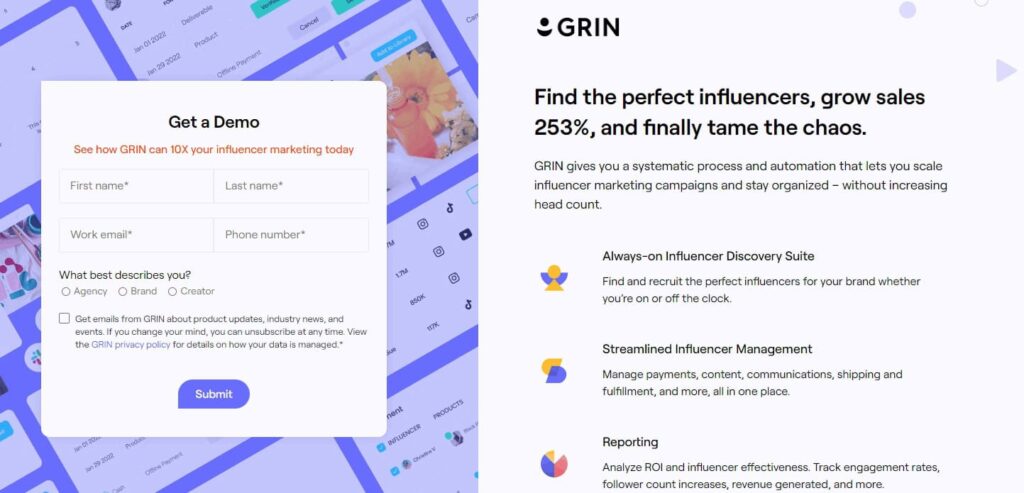
Develop a Proposal and Reach Out
Before reaching out to a prospect, you want to create an attractive offer for them. It could be monetary compensation or collaboration on a project. Study their page and business to come up with an offer they can’t refuse. Also, you may want to interact with their content and build your credibility before dropping a collaboration request in their inbox.
Marketing a Digital Product: FAQs 
Let’s talk about some frequently asked questions about how to market a digital product effectively.
Q: What is a digital product?
A digital product exists in a non-tangible format. Examples include software, online courses, ebooks, membership sites, and PDF guides. Since they don’t require physical inventory, you can sell a single digital product infinite times and globally.
Q: What are the benefits of selling digital products online?
A: Selling digital products online offers numerous benefits, for instance, you don’t need to have a physical inventory for them, which minimizes your overhead costs. Plus, selling digital products means you can reach a global audience and scale your business without limits.
Q: What are some effective strategies for marketing digital products?
A: Effective strategies for marketing digital products include extensive market research, engaging content creation, utilizing social media platforms, executing well-planned email marketing campaigns, and leveraging video marketing. Building a solid sales funnel with a landing page and an email autoresponder helps you build a sustainable income source.
Q: How should I price my digital product?
A: Pricing a digital product requires understanding its value and conducting market research to evaluate competition. Consider your unique value proposition, profit margins, business objectives, and target market. Choose a pricing strategy that reflects the quality and benefits of your product.
Q: What is a Go-To Marketing Strategy for a Digital Product?
A go-to marketing strategy for a digital product would be content marketing paired with email marketing. Use high-quality, valuable content to drive traffic to your email opt-in pages and promote your digital product with an email autoresponder.
Hire Webology
Your Takeaway: Keys to Successful Digital Product Marketing
Effective marketing requires audience research. The first step to developing a robust marketing strategy is to understand who you want to target. This helps you create content that directly speaks to them, maximizing your chances of generating leads consistently.
There are a lot of ways to put your offer in front of a target audience. However, you don’t want to overwhelm yourself in the beginning, especially when you have limited resources.
So, start digital product marketing by identifying one or two platforms you think would be most suitable. Optimize your social media pages and start creating content to attract the right eyeballs. To find fresh content ideas, you can reverse-engineer your competitors. Pick a few top competitors and replicate their content strategy.
More importantly, you want to build an email list around your digital product. This will help you sell your current as well as future digital products over and over again.
Begin by creating a landing page and offering a free lead magnet. It should be something your audience finds valuable enough to provide their email addresses.
Then, you can devise an email marketing campaign to add value to the customer journey, build trust, and promote your digital products. Use multiple traffic sources, such as social media and blog posts, to drive traffic to this lead magnet page and let your email autoresponder do the rest. Marketing digital products isn’t easy, but with a solid content strategy and an email list, you can effectively reach and convert your target audience.
